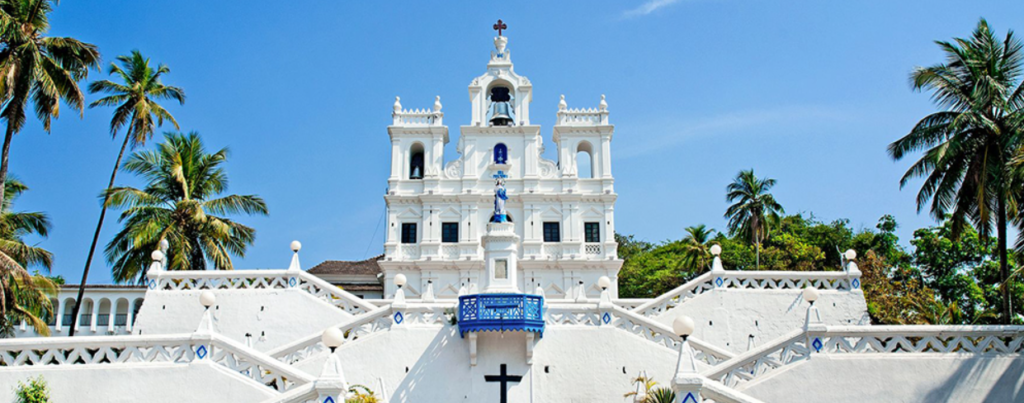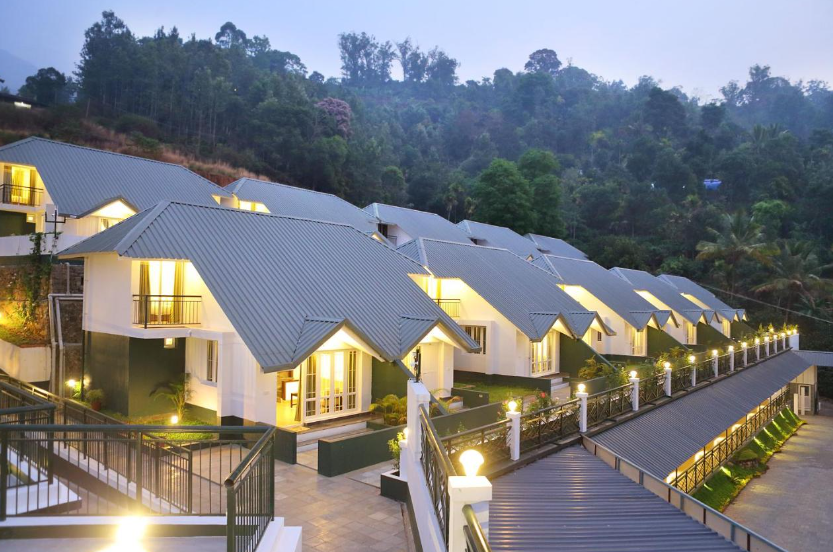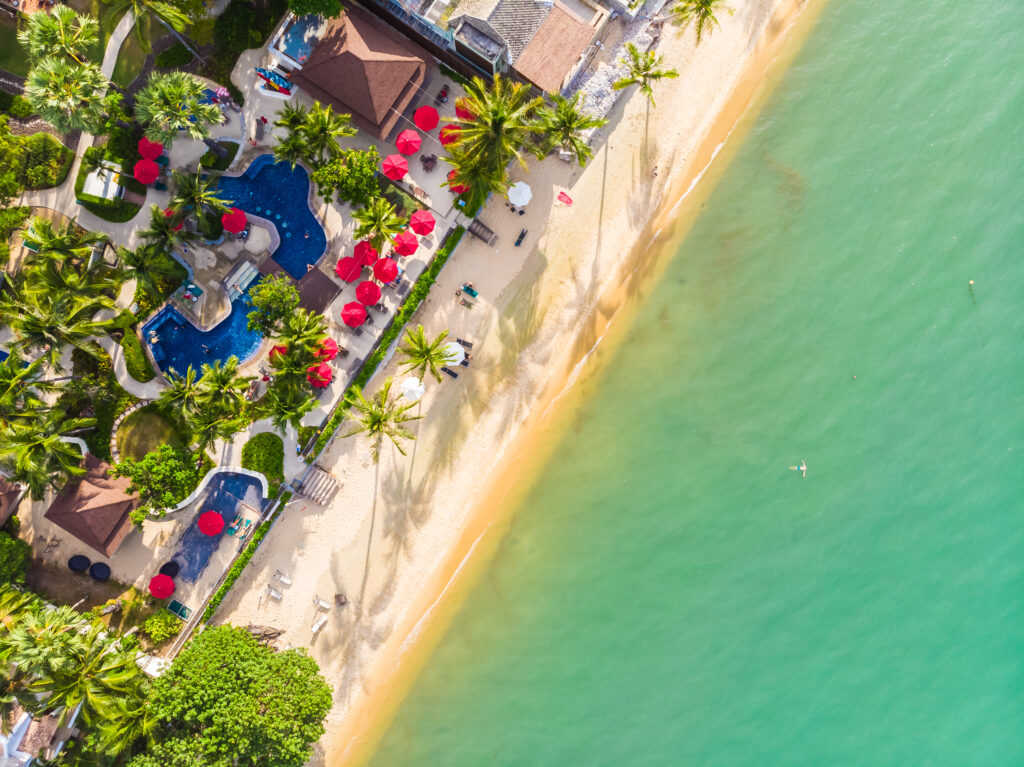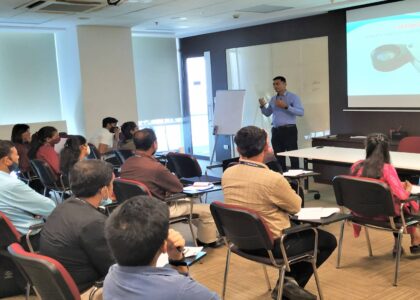Destination weddings have gained immense popularity in recent years, offering couples a unique and unforgettable way to tie the knot. When it comes to picturesque locations for such celebrations, India stands out as a top choice. Let’s explore some of the most sought-after destination wedding hotspots across India and why they are perfect for your dream wedding.
Introduction
What is a destination wedding?
A destination wedding is a celebration where the couple chooses a location away from their hometown or usual place of residence to exchange vows and celebrate their marriage. These weddings often take place in exotic or picturesque locations, such as tropical beaches, historic castles, or scenic mountainsides. They typically involve not only the wedding ceremony itself but also several days of festivities and activities for the couple and their guests, turning the event into a memorable vacation experience. Destination weddings can range from intimate gatherings with close family and friends to grand affairs with a larger guest list, and they offer couples the opportunity to combine their wedding day with a unique travel experience, creating lifelong memories in a stunning setting.
Why choose India for a destination wedding?
Choosing India for a destination wedding offers a tapestry of experiences that seamlessly blend culture, tradition, and breathtaking beauty. With its rich heritage spanning thousands of years, India presents a kaleidoscope of landscapes, from the majestic palaces of Rajasthan to the serene backwaters of Kerala, providing an unparalleled backdrop for your special day. India’s diverse culture means you can tailor your wedding festivities to reflect your unique style, whether it’s a vibrant and colorful Bollywood-themed celebration or a serene and spiritual ceremony by the Ganges River. The country’s warm hospitality ensures that your guests will feel welcomed and cherished, with a plethora of luxurious venues and expert wedding planners to make your dream wedding a reality. Indulge in exquisite cuisine that tantalizes the taste buds with a symphony of flavors, from spicy street food delights to royal banquets fit for a king. Embark on a journey of discovery as you explore ancient temples, bustling markets, and timeless traditions that add depth and meaning to your wedding experience. With its blend of old-world charm and modern amenities, India beckons couples seeking an unforgettable wedding adventure filled with love, culture, and endless possibilities.
Popular Locations
Goa

Goa, known as India’s beach paradise, boasts a plethora of popular locations that attract travelers from around the globe. Starting with the iconic beaches like Baga Beach, known for its vibrant nightlife and water sports, and Calangute Beach, a bustling stretch with a range of shacks and shopping options, Goa offers a diverse coastal experience. Moving inland, the charming town of Panaji, with its colonial Portuguese architecture and bustling markets, provides a glimpse into Goa’s rich cultural heritage. The historic Fort Aguada stands tall overlooking the Arabian Sea, offering panoramic views and a glimpse into Goa’s past. For nature enthusiasts, Dudhsagar Waterfalls presents a majestic sight, especially during the monsoon season. Additionally, the serene ambiance of Palolem Beach, the secluded beauty of Agonda Beach, and the spiritual aura of the Basilica of Bom Jesus add to the allure of this coastal gem. With its blend of sun, sand, culture, and adventure, Goa remains a favorite destination for travelers seeking a vibrant and memorable experience.
Jaipur

Jaipur, known as the Pink City, is a treasure trove of popular locations that embody the rich heritage and culture of Rajasthan. At the heart of the city lies the majestic Amer Fort, a UNESCO World Heritage site, with its intricate architecture, sprawling courtyards, and stunning views of Maota Lake. The City Palace, a blend of Rajput and Mughal styles, showcases exquisite palaces, museums, and gardens like the Chandra Mahal and Mubarak Mahal. Hawa Mahal, the iconic palace of winds, stands as a symbol of Jaipur’s architectural prowess, featuring hundreds of small windows and balconies. Jantar Mantar, an astronomical observatory built in the 18th century, is a testament to Jaipur’s scientific advancements. Nahargarh Fort offers panoramic views of the cityscape and is a popular spot for sunset enthusiasts. Jaipur’s bustling bazaars, including Johari Bazaar and Bapu Bazaar, offer a vibrant shopping experience with traditional handicrafts, textiles, and jewelry. Additionally, the Albert Hall Museum, Jaigarh Fort, Jal Mahal, and Sisodia Rani Garden are among the many other captivating attractions that make Jaipur a must-visit destination for history enthusiasts and culture seekers alike.
Udaipur

Udaipur, known as the “City of Lakes,” is a treasure trove of popular locations that mesmerize visitors with their rich history and breathtaking beauty. The majestic City Palace, a blend of Rajasthani and Mughal architecture, stands tall on the banks of Lake Pichola, offering panoramic views of the lake and the surrounding hills. Lake Palace, a former royal residence turned luxury hotel, floats ethereally on the serene waters of Lake Pichola, embodying the city’s romantic allure. The vibrant and bustling markets of Udaipur, such as the Hathi Pol Bazaar and Bada Bazaar, beckon with their colorful handicrafts, intricate textiles, and traditional Rajasthani artifacts, making them must-visit destinations for shopping enthusiasts. The serene ambiance of Saheliyon ki Bari, with its lush gardens, lotus pools, and marble pavilions, provides a peaceful retreat from the city’s hustle and bustle. Jag Mandir, another island palace on Lake Pichola, offers a glimpse into Udaipur’s regal past with its exquisite architecture and scenic surroundings. The iconic Jagdish Temple, dedicated to Lord Vishnu, showcases intricate carvings and attracts devotees and tourists alike. Udaipur’s scenic beauty extends to its outskirts, with destinations like Sajjangarh Palace (Monsoon Palace), renowned for its panoramic views of the city and stunning sunsets, and the tranquil Fateh Sagar Lake, perfect for leisurely boat rides amidst picturesque surroundings. These popular locations in Udaipur collectively weave a tapestry of culture, history, and natural beauty, leaving an indelible mark on every visitor’s heart.
Kerala

Kerala, known as “God’s Own Country,” boasts an array of popular locations that draw travelers from around the globe. The serene backwaters of Alleppey offer a unique experience aboard traditional houseboats, cruising through picturesque landscapes of lush greenery and tranquil waters. Munnar, nestled in the Western Ghats, enchants visitors with its sprawling tea plantations, misty mountains, and cool climate, making it a paradise for nature lovers and adventure seekers alike. The vibrant city of Kochi, with its rich historical heritage and bustling port, showcases a blend of colonial influences, ancient traditions, and modern developments, epitomized by landmarks like Fort Kochi, Chinese Fishing Nets, and the vibrant spice markets. The tranquil hill station of Wayanad beckons with its pristine forests, wildlife sanctuaries, and stunning waterfalls like Meenmutty and Soochipara, offering a serene escape into nature’s embrace. For those seeking a spiritual journey, Guruvayur with its renowned temple dedicated to Lord Krishna and the tranquil shores of Varkala with its cliffside views and pristine beaches stand as inviting destinations. Kerala’s diverse landscape, cultural richness, and warm hospitality make it a must-visit destination for travelers seeking a blend of natural beauty, cultural experiences, and relaxation.
Andaman and Nicobar Islands

The Andaman and Nicobar Islands boast a plethora of popular locations that captivate travelers with their natural beauty and rich biodiversity. Havelock Island stands out as a favorite destination, renowned for its pristine white-sand beaches like Radhanagar Beach, often hailed as one of Asia’s best beaches. Neil Island charms visitors with its laid-back vibe and stunning coral reefs, perfect for snorkeling and diving enthusiasts. Ross Island, a historic gem, offers a glimpse into the colonial past with its old British buildings and ruins. For nature lovers, the lush greenery and diverse wildlife of Mount Harriet National Park and Mahatma Gandhi Marine National Park are must-visits. Port Blair, the capital city, not only serves as a gateway to these islands but also offers attractions like the Cellular Jail National Memorial, showcasing India’s freedom struggle history. From adventurous water sports to serene beach escapes and cultural explorations, the Andaman and Nicobar Islands present a kaleidoscope of experiences for every traveler’s delight.
Factors to Consider
Climate
When considering factors that contribute to climate, a myriad of interconnected elements must be evaluated. These include natural occurrences like solar radiation, volcanic activity, and Earth’s orbital variations, which influence the planet’s energy balance over long periods. Additionally, human activities such as deforestation, industrial emissions, and agriculture practices significantly impact climate patterns by altering greenhouse gas concentrations in the atmosphere. The complex interplay of oceans, with their currents and heat absorption capacities, along with land surface characteristics like vegetation cover and urbanization, further contribute to regional and global climate variations. Furthermore, feedback mechanisms within Earth’s systems, such as the albedo effect from melting ice caps or the release of methane from thawing permafrost, create intricate feedback loops that can amplify or dampen climate change effects. Consideration of these multifaceted factors is essential for understanding the complexity of climate dynamics and for formulating effective strategies to mitigate climate change impacts and adapt to a changing environment.
Venue Options
When considering venue options, several critical factors come into play to ensure the success of an event or gathering. Firstly, the location of the venue is paramount, taking into account accessibility for attendees in terms of transportation and proximity to major hubs or landmarks. The size and capacity of the venue must align with the expected number of guests, ensuring ample space without being overly crowded or too vast. Budgetary considerations play a significant role, encompassing not just the rental cost but also any additional expenses such as catering, decorations, and technical equipment. The venue’s amenities and facilities, including parking, restrooms, and accessibility features, are crucial for a seamless and comfortable experience for all participants. Moreover, the ambiance and style of the venue should complement the event’s theme or purpose, creating a cohesive and memorable atmosphere. Flexibility in terms of setup options, timing, and policies is essential for adapting to unforeseen changes or specific event requirements. Lastly, feedback and reviews from previous events held at the venue can offer valuable insights into its suitability and quality of service, helping to make an informed decision when choosing among venue options.
Accessibility
When considering accessibility, several factors must be taken into account to ensure inclusivity for all individuals. Firstly, physical accessibility is crucial, encompassing wheelchair ramps, elevators, and wide doorways to accommodate mobility aids. Secondly, sensory considerations such as providing alternative formats like braille or audio descriptions for visually impaired individuals are essential. Additionally, digital accessibility is paramount, involving website designs that are navigable using screen readers and ensuring compatibility with assistive technologies. Communication accessibility, including sign language interpreters and captioning services, is vital for the deaf and hard of hearing community. Cultural and linguistic diversity should also be acknowledged, offering materials in multiple languages and respecting cultural norms. Lastly, promoting a mindset of inclusivity and sensitivity among staff and the broader community fosters a welcoming environment for everyone, regardless of their abilities or differences.
Budget Considerations
When considering budget considerations, several factors come into play that can significantly impact financial planning and decision-making. Firstly, it’s crucial to assess the scope and scale of the project or initiative in question, as larger endeavors often entail higher costs across various aspects such as materials, labor, and overheads. Secondly, timelines and deadlines play a pivotal role as they can influence costs related to rush orders, overtime pay, or expedited services. Thirdly, market conditions and economic trends need thorough evaluation to anticipate potential price fluctuations, currency risks, or supply chain disruptions that might affect budget allocations. Moreover, regulatory compliance and legal obligations must be factored in to avoid penalties or unexpected expenses related to non-compliance. Additionally, stakeholder expectations and requirements should be carefully considered to align budgetary priorities with organizational goals and strategic objectives. Lastly, incorporating contingency plans and risk management strategies within the budget framework can provide a buffer against unforeseen circumstances, ensuring financial resilience and adaptability in dynamic environments.
Planning Tips
Research and Visit in Advance
Planning tips for research and visiting a place in advance are crucial for a successful and fulfilling experience. Firstly, define your purpose and objectives clearly, whether it’s gathering information, conducting interviews, or exploring cultural aspects. Next, research the destination thoroughly, including its history, culture, and local customs, to have a deeper understanding and show respect. Make a detailed itinerary, scheduling visits to relevant sites, museums, and meeting potential contacts. Consider logistics such as transportation, accommodation, and budget, ensuring they align with your plans and timeframe. Reach out to local experts, guides, or institutions for insights and recommendations, enhancing your knowledge and experience. Pack essentials like maps, documents, and necessary tools for data collection or documentation. Keep communication channels open, stay flexible for adjustments, and be respectful of local norms and regulations during your visit. Lastly, reflect on your experiences, gather feedback, and document your findings for future reference or sharing with others. These proactive steps not only streamline your research and visit but also enrich your understanding and appreciation of the destination or subject matter.
Local Laws and Regulations
When navigating local laws and regulations, several key planning tips can streamline processes and ensure compliance. Begin by conducting thorough research to understand the specific laws applicable to your location and industry. Engage with local regulatory bodies or seek legal counsel to clarify any ambiguities and stay updated on recent changes. Develop a comprehensive compliance strategy tailored to your business operations, including permits, licenses, zoning requirements, and environmental regulations. Establish clear procedures for monitoring ongoing compliance and regularly review your practices to identify and address any potential issues proactively. Foster open communication within your organization to ensure all stakeholders are aware of their responsibilities and obligations under local laws. Consider implementing technology solutions or partnering with consultants to manage complex regulatory requirements efficiently. Finally, prioritize ongoing education and training for your team to stay informed and responsive to evolving legal landscapes, ultimately fostering a culture of compliance and responsible business practices.
Hiring Local Vendors
When planning to hire local vendors, several key tips can streamline the process and ensure a successful outcome. Begin by researching and creating a list of potential vendors based on their reputation, reviews, and portfolio of work to gauge their capabilities and reliability. Next, clearly define your project requirements, including budget constraints and timelines, to communicate effectively with vendors and obtain accurate quotes. Utilize local networks, such as industry associations or online platforms, to seek recommendations and gather additional options for comparison. Conduct thorough interviews or meetings with shortlisted vendors to discuss details, assess their expertise, and clarify any questions or concerns. Prioritize vendors who demonstrate flexibility, responsiveness, and a good fit with your project’s vision and values. Finally, formalize agreements through contracts that outline deliverables, payment schedules, and contingency plans to mitigate risks and ensure accountability throughout the partnership.
Cultural Sensitivity
When planning for cultural sensitivity, it’s crucial to prioritize understanding and respect for diverse perspectives and practices. Begin by researching and familiarizing yourself with the cultural norms, customs, and traditions of the community or group you’re engaging with. This includes learning about their values, beliefs, and historical background to avoid unintentional misunderstandings or offenses. Actively involve members of the community in the planning process to gain insights and ensure authentic representation. Consider language preferences, dietary restrictions, and religious observances when organizing events or activities. Create an inclusive environment by acknowledging and celebrating diversity through programming, displays, and materials that reflect a range of cultural experiences. Encourage open communication, empathy, and mutual learning among participants to foster a sense of belonging and appreciation for different perspectives. Continuously evaluate and adapt your approach based on feedback and evolving cultural dynamics to promote meaningful and respectful interactions across cultural boundaries.
Emergency Plans
Creating effective emergency plans requires careful planning and consideration of various factors. Start by identifying potential hazards specific to your region or environment, such as natural disasters like earthquakes, floods, or wildfires, as well as human-made hazards like chemical spills or power outages. Conduct a thorough risk assessment to understand the impact of these hazards on your community or organization. Next, establish clear communication channels and protocols to ensure that information reaches everyone promptly during an emergency. Develop evacuation plans and designate assembly points for different scenarios, considering accessibility for people with disabilities or special needs. Train employees or community members on emergency procedures regularly and conduct drills to test the effectiveness of your plans. Collaborate with local authorities, emergency services, and neighboring businesses or communities to coordinate responses and resources. Keep your emergency plans updated and review them periodically to incorporate lessons learned from past incidents or changes in your environment. Finally, promote awareness and preparedness among stakeholders to foster a culture of safety and resilience in the face of emergencies.
Benefits
Exotic Backdrops
Exotic backdrops offer a myriad of benefits that enrich experiences and create lasting memories. They provide a unique and visually stunning setting, adding depth and character to any scene or event. From lush tropical jungles to ancient historical sites, these backdrops captivate the imagination and transport individuals to distant lands without leaving their current location. Exotic backdrops also serve as powerful storytelling tools, enhancing narratives and creating immersive environments for film productions, photo shoots, and themed events. Moreover, they offer opportunities for cultural exploration and learning, allowing people to connect with different traditions, customs, and natural landscapes. These backdrops can inspire creativity and spark curiosity, encouraging individuals to embrace diversity and broaden their perspectives. Whether for artistic endeavors, educational purposes, or leisurely escapades, the benefits of exotic backdrops are vast and contribute to enriching lives in meaningful ways.
Cultural Richness
The benefits of cultural richness are vast and multifaceted, permeating various aspects of society and individual lives. At its core, cultural richness fosters diversity, promoting a tapestry of traditions, beliefs, and perspectives that enrich the human experience. This diversity fuels creativity and innovation, as exposure to different cultural norms and values encourages thinking outside the box and exploring new ideas. Moreover, cultural richness enhances social cohesion by fostering mutual respect, understanding, and tolerance among diverse groups, thereby reducing conflicts and promoting peaceful coexistence. It also contributes to economic growth and development by spurring tourism, cultural exchanges, and international collaborations, creating opportunities for cultural industries and artisans to thrive. Furthermore, cultural richness plays a crucial role in preserving heritage and identity, safeguarding intangible cultural practices, languages, and customs for future generations. Overall, embracing and celebrating cultural richness not only adds vibrancy to communities but also nurtures a more inclusive, interconnected, and harmonious global society.
Guest Experience
Creating an exceptional guest experience yields numerous benefits across the hospitality industry. It goes beyond mere satisfaction, fostering loyalty and positive word-of-mouth that can significantly impact a brand’s reputation and bottom line. A guest-centric approach enhances customer retention, as happy guests are more likely to return and recommend the establishment to others. Positive experiences also lead to increased spending, as satisfied guests are inclined to explore additional services or upgrade their accommodations. Moreover, a focus on guest experience contributes to a competitive edge, setting an establishment apart in a crowded market. Through personalized interactions, attention to detail, and seamless service delivery, businesses can create memorable moments that forge lasting emotional connections with guests, building a loyal customer base that drives sustained success and growth.
Conclusion
In conclusion, India’s destination wedding hotspots offer a mesmerizing blend of romance and culture, making them ideal choices for couples seeking a unique and unforgettable wedding experience. From the majestic palaces of Rajasthan to the serene backwaters of Kerala, each location presents a distinctive charm that adds a touch of magic to the celebration. The rich cultural heritage, vibrant colors, and diverse traditions woven into these destinations create a picturesque backdrop for couples to exchange vows and embark on a new journey together. With an array of options catering to different preferences and budgets, India stands as a top choice for couples looking to celebrate their love amidst beauty, tradition, and timeless allure.












